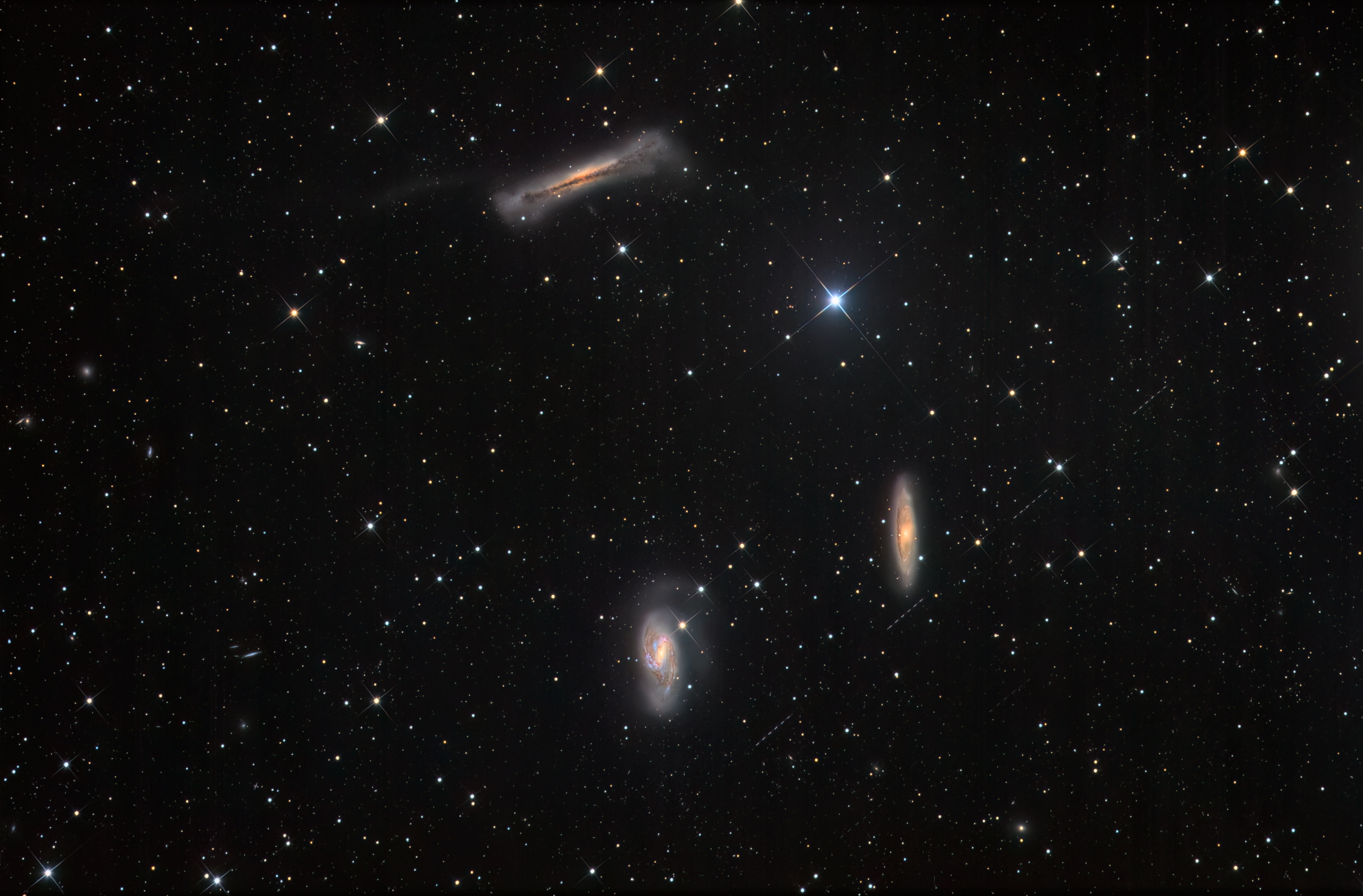 Leo
Triplet.
Spring brings "galaxy season" for astro-imagers. The
plane of the
Milky Way has rotated to the west and our view of the night sky is
looking away from the
obscuring dust and gas of our galaxy. This makes far away
galaxies easy
to view. Perhaps one of the best views is in
Leo
where three bright galaxies lie close together. These are
M65 and M66 along
with NGC 3628. All three are
spiral
galaxies, but present slightly different view because of the angles
at which we see them.
M66 is the least inclined, while M65 and NGC 3628 are viewed nearly
edge-on.
M65 shows a rather smooth spiral surface and is classified as
type
SAB(rs)a. NGC
3628 is dominated by a dark dust lane that suggests interaction with
its two neightbors. In fact, a faint
tidal tail
can be seen to the left (east) of the galaxy
which may be a
dwarf galaxy. For more information about the Leo Triplet see
the
Sky At Night web page. In the image are four short dotted
lines. These were made by the bright asteroid
173 Ino as it passed
through the field of view over four nights.
Leo
Triplet.
Spring brings "galaxy season" for astro-imagers. The
plane of the
Milky Way has rotated to the west and our view of the night sky is
looking away from the
obscuring dust and gas of our galaxy. This makes far away
galaxies easy
to view. Perhaps one of the best views is in
Leo
where three bright galaxies lie close together. These are
M65 and M66 along
with NGC 3628. All three are
spiral
galaxies, but present slightly different view because of the angles
at which we see them.
M66 is the least inclined, while M65 and NGC 3628 are viewed nearly
edge-on.
M65 shows a rather smooth spiral surface and is classified as
type
SAB(rs)a. NGC
3628 is dominated by a dark dust lane that suggests interaction with
its two neightbors. In fact, a faint
tidal tail
can be seen to the left (east) of the galaxy
which may be a
dwarf galaxy. For more information about the Leo Triplet see
the
Sky At Night web page. In the image are four short dotted
lines. These were made by the bright asteroid
173 Ino as it passed
through the field of view over four nights.This image was made with my ASA 10N astrograph and STL11000M CCD, using Luminance, Red, Green and Blue flters (LRGB). The total exposure time was a little over 24 hours. Processing was done in MaximDL and Photoshop.
Here are crops of the galaxies:
.
 M65
& M 66
M65
& M 66  NGC 3628
NGC 3628.
This page illustrates what can be photographed using amateur telescopes and a CCD camera. I currently use an SBIG STL11000M camera and have previously used SBIG and Starlight Xpress cameras, as well as a Cookbook 245 camera that I built myself. Many of the images o this web site were taken from my backyard near a busy street with several street lights. Not only is the CCD camera a great imaging tool, but it allows "real time" observation of objects not normally visible in areas with moderate-severe light pollution.


